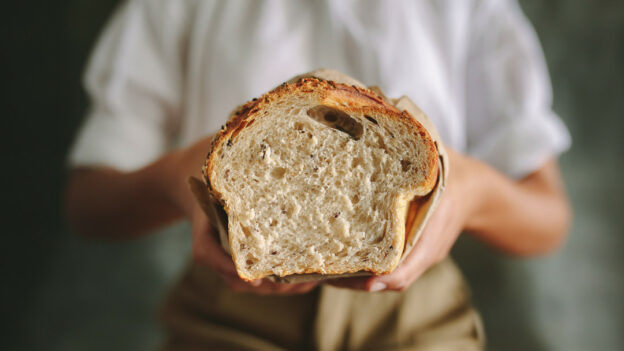Bread is one of the most consumed foods in Quebec, but unlike in many other provinces, its production and labeling are regulated under a provincial law known as the Règlement sur le pain et les produits de boulangerie (Bread and Bakery Products Regulation).
This regulation has been in place since the 1970s and continues to influence how bakeries and food manufacturers produce and sell bread in Quebec. For both consumers and businesses, it is important to understand the requirements of this law, as it affects everything from ingredients to packaging.
Contents
What is the Règlement Pain Québec?
The Règlement sur le pain is a provincial regulation that defines what can legally be called “bread” in Quebec. It establishes:
-
The minimum content of wheat flour and water.
-
Which vitamins and minerals must be added to white bread.
-
The labeling standards for whole wheat, multigrain, and enriched bread.
-
Which additives are prohibited in bread production.
This regulation was originally created to ensure public health by enriching bread with essential nutrients, and also to protect consumers from misleading product labels.
Key Provisions of the Quebec Bread Regulation
1. Definition of Bread
According to the regulation, bread must be made primarily from wheat flour, water, yeast, and salt. Variations are allowed, such as rye bread or multigrain bread, but the product must be clearly labeled to reflect its true composition.
2. Mandatory Enrichment
One of the most distinctive rules is that white bread sold in Quebec must be enriched. Producers are required to add iron and B vitamins (thiamine, riboflavin, niacin, and folic acid). This enrichment policy was introduced to fight nutritional deficiencies among the population in the mid-20th century and remains in effect today.
3. Labeling Standards
Labels on bread packaging must be accurate and transparent. For example:
-
“Whole wheat bread” must contain flour made from the entire wheat kernel, not just partial whole flour.
-
“Multigrain bread” must specify the types of grains used.
-
Claims such as “healthy” or “nutritious” cannot be misleading.
4. Additive Restrictions
Certain artificial preservatives and chemical enhancers are restricted or prohibited. The regulation favors natural fermentation processes and aims to limit unnecessary additives.
5. Categories of Bakery Products
The regulation distinguishes between:
-
Pain ordinaire (regular bread) – standard loaves made from wheat flour.
-
Pain enrichi (enriched bread) – bread with mandatory vitamins and minerals added.
-
Produits de boulangerie (bakery products) – items such as buns, rolls, croissants, and other baked goods, which may be subject to separate labeling rules.
Why Quebec Regulates Bread
Quebec is unique in Canada for maintaining specific bread laws. The reasons include:
-
Public Health – The fortification of bread helped reduce anemia and vitamin deficiencies in the population.
-
Consumer Protection – The regulation ensures that buyers get what they expect when purchasing “whole wheat” or “multigrain” bread.
-
Cultural Heritage – Bread is central to French-Canadian culture, and strict rules help maintain high quality and authenticity in bakeries.
Real-World Examples
-
For Bakers: A Montreal bakery producing white sandwich bread must include the required iron and B vitamins. If it fails to comply, it risks fines or being barred from sale.
-
For Consumers: A customer buying whole wheat bread in Quebec can be confident that the product contains flour from the full wheat kernel, thanks to strict labeling requirements.
-
For Food Importers: A company selling bread products from Ontario or abroad must adapt recipes and packaging before distributing in Quebec to meet provincial standards.
The Future of Bread Regulation in Quebec
Although the regulation has existed for decades, there are ongoing discussions about modernizing it. Some proposed updates include:
-
Allowing more flexibility for gluten-free and specialty breads.
-
Adjusting enrichment rules to reflect modern nutrition science.
-
Better alignment with federal Canadian Food Inspection Agency (CFIA) regulations.
-
Encouraging innovation in sustainable baking practices, such as reduced food waste and eco-friendly packaging.
Conclusion
The Règlement Pain Québec remains one of the most distinctive food regulations in Canada. By defining what bread is, requiring nutrient enrichment, and protecting labeling integrity, it plays a major role in Quebec’s food culture and public health.
For consumers, it ensures transparency and better nutrition. For bakers and businesses, it requires compliance with strict standards but also strengthens consumer trust. Anyone planning to sell bread in Quebec must understand this regulation in detail to succeed in the market.
FAQ
1. Is enriched bread mandatory in Quebec?
Yes, white bread must be enriched with iron and B vitamins.
2. Does the law apply to artisanal bakeries?
Yes, all bread sold in Quebec must comply, whether from a small local bakery or a large factory.
3. Are gluten-free breads covered by the regulation?
Yes, but they are treated separately and do not have the same enrichment requirements as wheat-based bread.
4. Who enforces the regulation?
The Ministère de l’Agriculture, des Pêcheries et de l’Alimentation du Québec (MAPAQ) is responsible for enforcement.
5. How is Quebec different from other provinces?
Quebec maintains stricter rules for enrichment and labeling compared to most Canadian provinces.
